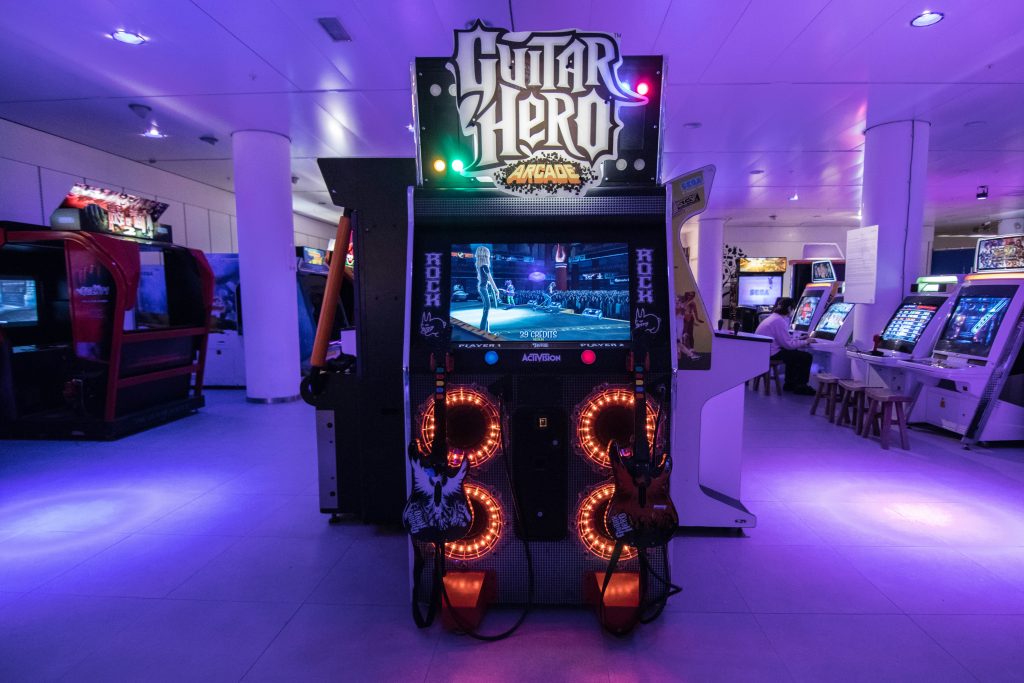The world of gaming consoles has come a long way since its inception, transforming from simple, pixelated experiences to visually stunning, worlds. The evolution of gaming consoles is a testament to the rapid advancement in technology, innovation, and the ever-growing demands of gamers. Let’s take a journey through the history of gaming consoles, exploring how they’ve evolved from the past to the present.
1. The Early Days: The Birth of Home Consoles (1970s – 1980s)
The very first home gaming console was the Magnavox Odyssey, released in 1972. It was a basic system that allowed players to engage in games like Pong, with simple graphics and a limited set of games. Despite its simplicity, it marked the beginning of an era in which gaming moved from the arcades into the home.
In 1977, the Atari 2600 was introduced, becoming the first successful home console to use interchangeable game cartridges. It offered a larger library of games, including iconic titles like Space Invaders and Asteroids, and solidified the foundation of home gaming systems. However, the early 1980s saw a crash in the industry due to over-saturation of poor-quality games, but this setback didn’t last long.
2. The 8-Bit Era: Rise of the Icons (1985 – 1990s)
The mid-80s introduced the Nintendo Entertainment System (NES) in 1985, which revived the gaming industry. With iconic titles like Super Mario Bros., The Legend of Zelda, and Metroid, Nintendo brought both innovation and high-quality content to home gaming. The NES revolutionized console gaming by introducing a new level of gameplay depth, engaging storylines, and a memorable roster of characters that became iconic figures in gaming.
Not far behind, the Sega Master System was released as a competitor to the NES, marking the beginning of a long-standing rivalry between Sega and Nintendo. The rivalry grew more intense with the release of the Sega Genesis (Mega Drive) in 1988, which delivered 16-bit graphics and fast-paced games, such as Sonic the Hedgehog, giving Sega a foothold in the gaming market.
3. The 32/64-Bit Era: The Power of 3D (1990s – 2000s)
The transition into the 3D era was one of the most significant shifts in gaming history. In 1994, Sony’s PlayStation arrived and quickly established itself as a dominant force in the gaming world. With its 32-bit architecture, it was capable of rendering 3D environments, which opened up new possibilities for developers. Iconic games such as Final Fantasy VII, Metal Gear Solid, and Gran Turismo made the PlayStation a must-have console for gamers.
Around the same time, Nintendo introduced the Nintendo 64 in 1996, which was the first console to offer true 3D graphics and featured legendary games like Super Mario 64 and The Legend of Zelda: Ocarina of Time. These titles revolutionized the gaming experience, offering expansive 3D worlds and introducing the concept of free-roaming gameplay.
Sega also made a bold move with the Sega Dreamcast in 1999, which was ahead of its time with features like online gaming and impressive graphics for its time. However, it couldn’t compete with Sony’s PlayStation 2, which was released in 2000.
4. The Age of HD: Expanding Horizons (2000s – 2010s)
The 2000s saw the rise of HD gaming, with consoles offering higher resolution graphics, expansive open worlds, and online connectivity that fundamentally changed how players interacted with their games. In 2000, Sony released the PlayStation 2, which became the best-selling console of all time. Not only did it offer powerful 3D graphics and a massive game library, but it also had a built-in DVD player, making it an attractive multimedia device for households.
In 2005, Microsoft entered the gaming console race with the Xbox 360, introducing HD graphics and online multiplayer through Xbox Live, a service that revolutionized online gaming. The Xbox 360’s sleek design and strong library of games like Halo 3 and Gears of War solidified its place in gaming history.
Meanwhile, Nintendo’s Wii (2006) introduced motion controls to the gaming world, offering a new way to interact with games. With titles like Wii Sports and Super Mario Galaxy, the Wii appealed to a wider audience, bringing gaming to families and casual players.
Sony followed with the PlayStation 3 in 2006, which pushed the boundaries with Blu-ray technology, an advanced graphics processor, and online multiplayer features through the PlayStation Network. It faced tough competition from Microsoft but ultimately became a key player in the HD gaming era.
5. The Rise of 4K and Virtual Reality (2010s – Present)
The gaming world entered a new frontier in the 2010s with the introduction of 4K gaming, virtual reality (VR), and even more robust online ecosystems. In 2013, Sony released the PlayStation 4, which introduced features such as a touchpad controller, a built-in camera, and faster processing power. It quickly became a favorite among gamers, particularly due to exclusive titles like The Last of Us and Uncharted 4.
Microsoft’s Xbox One was released around the same time, featuring an all-in-one entertainment system that integrated live TV, media streaming, and gaming into one device. Its inclusion of cloud gaming services helped set the stage for the future of gaming.
In 2017, Nintendo introduced the Switch, a hybrid console that can be used both as a handheld device and a traditional home console. Its portability and popular games like The Legend of Zelda: Breath of the Wild and Super Mario Odyssey made it a massive success.
In the same period, VR began gaining traction. Sony’s PlayStation VR, the Oculus Rift, and the HTC Vive offered an engaging gaming experience, bringing gamers closer to the action than ever before. Virtual reality opened up new possibilities for gaming, from interactive first-person to life-like simulations.
6. The Current Generation: A New Era (2020s – Present)
The current generation of consoles—Sony’s PlayStation 5 and Microsoft’s Xbox Series X/S—has taken gaming to even greater heights. These consoles support 4K resolution, 120Hz refresh rates, and ray tracing technology, which deliver highly realistic graphics and worlds. The addition of solid-state drives (SSD) significantly reduces load times, making the gaming experience more seamless than ever before.
These consoles also focus heavily on backward compatibility, allowing players to access a huge library of games from previous generations, and they’re pushing forward with cloud gaming solutions such as Xbox Game Pass and PlayStation Now, making games accessible to more players across different devices.

